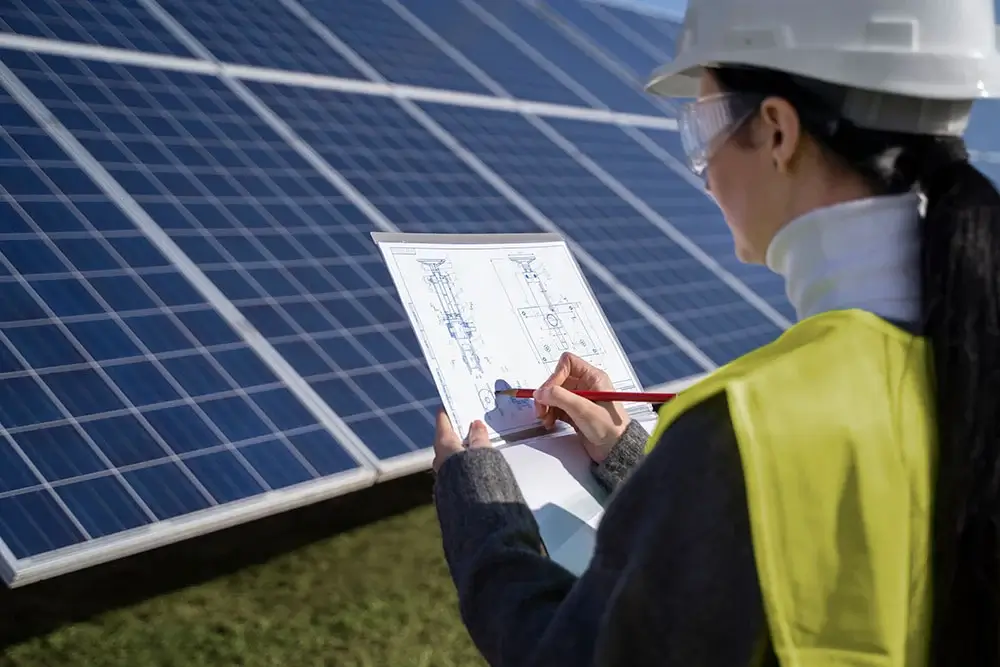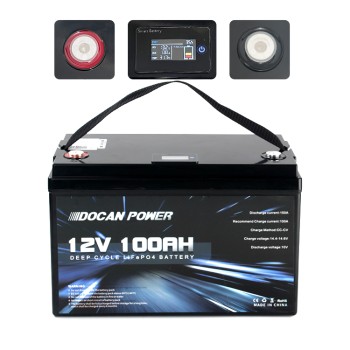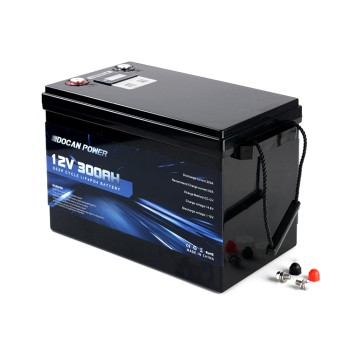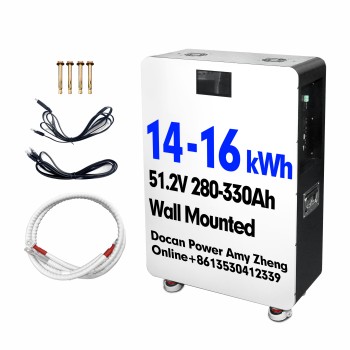
Australia’s push for renewable energy is gaining momentum with the proposed Cheaper Home Batteries Program, a $2.3 billion (AUD) federal subsidy set to launch on July 1, 2025, if Labor wins the 2025 election (SolarQuotes, April 2025). This initiative offers an upfront discount of ~$372 per kWh of usable battery capacity (approximately 30% off installation costs), potentially saving households $3,720 on a 10 kWh system. Combined with state-level incentives, this makes 2025 an ideal time for DIY solar enthusiasts to build lithium iron phosphate (LiFePO4) storage systems, known for their 6,000–8,000 cycle lifespan, 95% efficiency, and safety.
Crafting a solar storage system requires precision, but this blueprint simplifies the process. It outlines five steps to design a LiFePO4-based system that maximizes federal and state subsidies. Using data-driven insights, industry trends, and practical tools, this guide ensures your system is cost-effective, compliant, and tailored to your energy needs.
Step 1: Plan Your System Goals
Why It Matters
Defining your system’s purpose—whether cutting bills via time-of-use (TOU) savings, achieving off-grid independence, or ensuring backup power—shapes size, cost, and configuration. The federal rebate (~A$372/kWh, tapering to 2030) and state incentives (e.g., NSW’s A$1,600–2,400 for 13.5 kWh plus A$250–400 VPP signup payments) make these goals more affordable.
How to Plan
- Assess energy needs: Check your electricity bill for daily consumption. The average Australian household uses about 18.7 kWh/day.
- Match to PV output: A 6 kW PV system generates ~20–24 kWh/day in Melbourne, suggesting a 10–12 kWh battery for TOU savings.
- Set objectives:
- TOU Savings: Store daytime solar ($0.20/kWh) for evening peaks ($0.50/kWh), needing 8–15 kWh.
- Off-Grid: Size for 2–3 days’ autonomy (e.g., 20–30 kWh for 10 kWh/day) in rural areas.
- Backup: Support critical loads (e.g., 5 kWh for fridge, lights) during outages, common in Queensland.
- Budget with subsidies: A 10 kWh LiFePO₄ system costs ~A$9,000–16,000 installed; the federal rebate saves ~A$3,720, and state incentives (e.g., WA’s $500/kWh up to $5,000 for Synergy, $750/kWh up to $7,500 for Horizon Power) further reduce costs, yielding a 5–7 year payback.
Key Considerations
- Seasonal variation: Winter solar output drops 20–30% in Victoria, requiring a 10–20% capacity buffer.
- Future needs: Plan for electric vehicle (EV) charging or household growth, favoring scalable systems.
- Industry Trend: 42% of homeowners undersize batteries; precise planning avoids costly upgrades.

Step 2: Select LiFePO4 Components
Why It Matters
A high-performing system requires compatible, high-quality components. LiFePO4 batteries (6,000–8,000 cycles, 95% efficiency) are ideal, but must pair correctly with inverters, MPPT controllers, and BMS units to avoid 10–20 % efficiency losses.
Component Selection
- LiFePO₄ Battery:
- Specs: 48 V, 100–200 Ah (5–10 kWh), UL 1973-certified.
- Cost: A$9,000–16,000 installed; net A$5,280–12,280 post-federal rebate.
- Why 48 V?: Lower wiring losses, suited to 5–20 kW PV systems.
- Hybrid Inverter:
- Specs: 3–5 kW, 48 V input, ≥95 % efficiency, AS/NZS 4777-certified (e.g., Victron MultiPlus).
- Cost: A$1,500–3,000.
- MPPT Controller:
- Specs: 150–400 V input, 50–100 A output, ~98 % efficiency.
- Cost: A$500–1,000.
- BMS:
- Specs: UL 1973-certified, 100–200 A, Bluetooth/Wi-Fi monitoring.
- Cost: A$300–600.
Selection Tips
- Ensure compatibility: Confirm 48V and LiFePO4 charge profile (3.2–3.6V/cell) for 95%+ efficiency.
- Certifications: Use IEC 62619-compliant BMS and AS/NZS 4777 inverters for subsidy eligibility.
- Scalability: Choose batteries/inverters supporting parallel connections for expansion.
Step 3: Design for Subsidy Compliance
Why It Matters
The federal subsidy requires AS/NZS 5139 compliance for safety, grounding, and documentation, with 28% of DIY installations failing inspections in 2025 (Clean Energy Council, 2025). State programs (e.g., NSW’s Peak Demand Reduction Scheme) have similar rules. Compliance saves ~$3,720 on a 10 kWh system (federal) plus state incentives (e.g., $2,480 in NSW with VPP), ensuring safety in Australia’s varied climates.
Design Requirements
- Safety Standards (AS/NZS 5139):
- Enclosure: IP54-rated, fire-resistant, 1-meter clearance.
- Ventilation: Maintain 15–35°C, avoid direct sunlight/humidity.
- Grounding: 6 mm² copper cable to main earth terminal (AS/NZS 3000).
- Signage: “Battery Storage” labels on enclosure/switchboard.
- Federal Subsidy Documentation:
- PV Proof: Certificate or bill confirming 5 kW+ solar system.
- Battery Specs: Datasheet with voltage (48V), capacity (100Ah), certifications (UL 1973).
- Compliance: AS/NZS 5139 certificate, signed by electrician or DIY declaration.
- State-Specific Rules (SolarQuotes, April 2025):
- NSW: 5–50 kWh VPP-capable batteries; installer must use an Accredited Certificate Provider.
- VIC: 6 kWh+ capacity, Solar Victoria-approved product list for $8,800 interest-free loan.
- WA: VPP-capable for $500/kWh (Synergy, max $5,000) or $750/kWh (Horizon, max $7,500), starts July 1, 2025.
- NT: $400/kWh up to A$12,000 via Home & Business Battery Scheme.
Step 4: Optimize and Scale Your System
Why It Matters
Optimization ensures 95%+ efficiency and 15–20 year lifespan, while scalability supports future needs, saving 15–20% versus full replacements. Federal ($372/kWh) and state subsidies (e.g., VIC’s $8,800 loan) cover initial and expansion costs, making optimization key to financial and performance gains.
Optimization Strategies
- BMS Settings:
- Charge Rate: 0.5C (e.g., 50A for 100Ah) for efficient charging.
- Depth of Discharge (DOD): 80% (e.g., 8 kWh from 10 kWh) for 8,000+ cycles.
- Float Voltage: 3.45V/cell (55.2V for 16S) to avoid overcharging.
- Smart Integration:
- Smart meter ($200–$400) optimizes TOU, saving $300–$500/year in Melbourne.
- Wi-Fi BMS (e.g., VictronConnect) for real-time state-of-charge (SOC) monitoring.
- Load Testing: Run a 1 kW load for 1 hour with a $50 power meter to confirm 90%+ efficiency.
- Scalability:
- Modular LiFePO4 batteries for parallel connections (e.g., 5 kWh modules at ~$2,080 post-federal subsidy).
- Inverters with 20% spare capacity (e.g., 5 kW for 4 kW load) for expansion.
Key Considerations
- Performance Monitoring: Regular SOC checks prevent over-discharging in winter (20–30% less solar output).
- EV Planning: 15% of households own EVs by 2025, needing 5–10 kWh extra capacity.
- Industry Trend: 20% rise in scalable LiFePO4 systems, as DIYers leverage subsidies.
Step 5: Apply for Federal and State Subsidies
Why It Matters
The federal subsidy (~$372/kWh, up to 50 kWh) can save $3,720 on a 10 kWh system, while state incentives (e.g., NSW’s $2,480 with VPP, WA’s $5,000) add savings. However, 35% of federal applications are rejected due to incomplete documentation.
Application Process
- Federal Subsidy (Cheaper Home Batteries Program):
- Timeline:
- June 2025: Register via Clean Energy Regulator.
- July 1, 2025: Submit PV proof, battery specs, AS/NZS 5139 certificate.
- August 2025: Funds disbursed in 4–6 weeks, retroactive for installs from now.
- Requirements:
- 5–50 kWh battery, VPP-capable, connected to 5 kW+ PV system.
- UL 1973/IEC 62619 certifications, AS/NZS 5139 compliance.
- Double-Dipping: Allowed with state schemes, but NSW’s PDRS may reduce if capacity exceeds 28 kWh.
- Timeline:
- State Incentives:
- NSW: $160/kWh (2–28 kWh), ~$2,480 for 13.5 kWh with VPP; apply via ACP-accredited installer.
- VIC: $8,800 interest-free loan, 6 kWh+ capacity, apply via Solar Victoria.
- WA: $500/kWh (Synergy, max $5,000) or $750/kWh (Horizon, max $7,500), starts July 1, 2025.
- NT: $400/kWh, up to $12,000, via GrantsNT.
- Common Errors:
- Missing PV proof (20% of rejections).
- Incomplete specs (15% of rejections).
- Non-compliant installs (25% of rejections).
- Cost: $100–$200 for consultant review, offset by $3,000+ savings.
Application Tips
- Apply Early: Federal fund is uncapped, but state programs (e.g., WA’s 20,000 rebates) are limited.
- Verify Documents: Confirm PV system age, battery certifications, and VPP capability.
- Track Status: Monitor via Clean Energy Regulator or state portals (e.g., Solar Victoria).
- Industry Trend: 80% of federal subsidy applications involve LiFePO4 systems, due to their VPP compatibility.
Conclusion
Australia’s federal and state battery subsidies, including the $2.3 billion Cheaper Home Batteries Program, make 2025 a pivotal year for DIY solar storage. By planning your goals, selecting LiFePO4 components, ensuring compliance, optimizing performance, and securing subsidies, you can build a system that saves thousands annually and supports a sustainable future. Start now: assess your energy needs, explore LiFePO4 options, and prepare for June 2025 applications. For quality solutions, visit our Solar Home Battery to power your solar dreams.






Leave a Comment